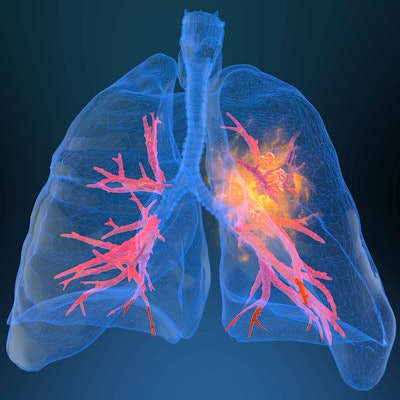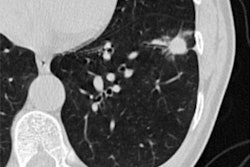
Doubling funding for research focused on women with lung cancer could have significant economic and health impacts for families and the U.S., a technical report released November 1 by Women's Health Access Matters (WHAM) suggests.
A team led by Matthew Baird from the Rand Corporation (which WHAM commissioned to perform the study), found that health improvements of 0.1% in mortality and quality of life could yield a return on investment of $1,200 for every additional dollar spent.
"Small investments in lung cancer research on women are likely to yield large societal gains," Baird and colleagues said. "The very high return on investment from assumptions of relatively small overall health improvement support the potential for these gains from research."
Lung cancer research funding has been low compared to what research on major cancers that affect women receives. In 2015, the National Institutes of Health (NIH) spent $674 million for breast cancer research versus $349 million for lung cancer, even though lung cancer killed more Americans. Such research includes imaging studies exploring the use of low-dose CT in lung cancer screening and work that explores how to further shape imaging guidelines related to screening.
The investigators sought to assess the socioeconomic impacts of investments in U.S. women's lung health research, as well as gaps in the current research portfolio and potential economic gains through greater funding. They used a microsimulation model that incorporated existing studies examining sex or gender differences and simulated the progression of each person's health over a 30-year time horizon in a cohort of 999,565 lives.
The team wrote that the U.S. can "reliably anticipate" multiple economic gains when assuming additional research generates health improvements of 0.1% or less. These gains are in terms of age incidence, mortality, and quality of life.
The group found that doubling the women-targeted portion of the research funding portfolio resulted in a return on investment of 1,394%. It also discovered that health improvements of 0.1% in mortality and quality of life could have the following additional effects:
- Overall, more than 22,700 years could be saved across 30 years of extended life for people aged 25 and older.
- Women could realize 18,500 more life years and men could enjoy 4,200 more.
- Approximately 2,500 more labor years, valued at $45 million in labor productivity, could result from increased work time and longer life.
The report findings could help decision-makers plan for future research strategies, funders decide how to allocate their portfolios, and could encourage payers and business leaders to invest in women's health, the team concluded.





















